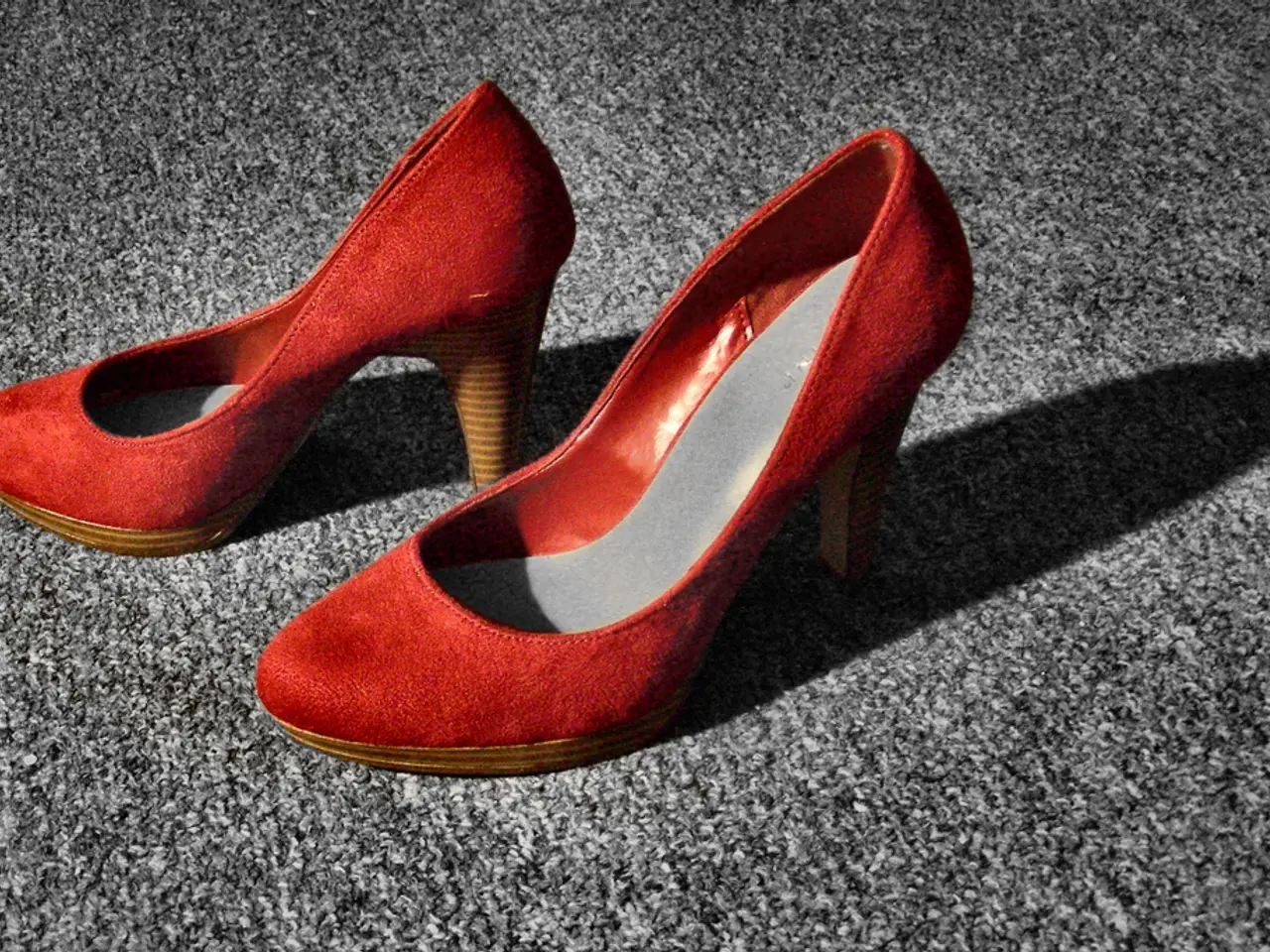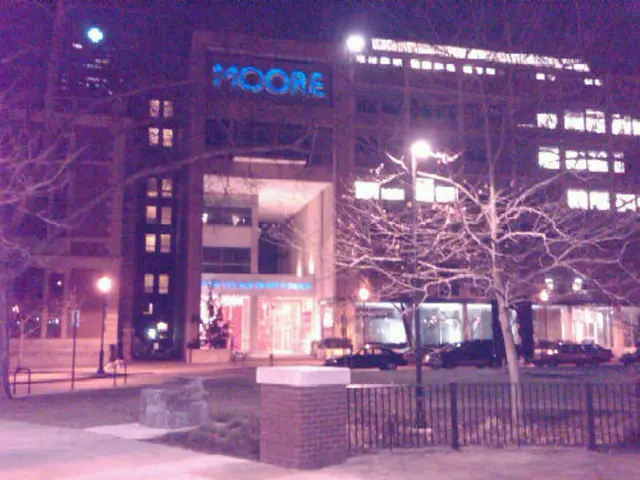Clubfoot Causes and Remedies: Exploration of Underlying Factors and Therapeutic Methods
In the world of childhood health, clubfoot - a condition where a newborn's foot or feet appear rotated internally at the ankle - can have significant and lasting effects if left untreated.
If clubfoot is not addressed early, typically within the first three months after birth, it can lead to a range of complications that impact a child's mobility, quality of life, and overall well-being.
Untreated clubfoot can result in a permanent deformity, with the foot being twisted inward and downward, making it difficult for the child to walk normally. This deformity can also lead to functional limitations, such as difficulty bearing weight properly, and chronic pain due to improper foot positioning.
In severe cases, the foot may even appear upside-down, making walking a significant challenge. In such cases, the child may appear to walk on their ankles or the sides of their feet, which can further exacerbate the difficulties they face.
Moreover, untreated clubfoot can lead to lifelong disability, limiting physical activities and potentially causing social and psychological consequences. Progressive musculoskeletal complications, including altered bone development and joint stiffness, can also occur.
In some extreme cases, there is a long-term risk of eventually developing arthritis.
However, early intervention can prevent these severe complications. The Ponseti method, which involves manipulating the baby's foot with the specialist's hands and applying a plaster cast to hold the foot in position, is the primary way of treating clubfoot. This method, when applied correctly, can result in full correction and near-normal foot function in adulthood.
The French method, which includes daily stretching, exercise, massage, and immobilization of the foot with nonelastic tape, is another approach. This method is usually performed by a physical therapist for the first three months, after which parent-led treatments continue until the child is two years old.
It's important to note that if only one foot is affected, it is usually slightly shorter than the other, especially at the heel. The tendons on the inside of the leg are shortened, the bones have an unusual shape, and the Achilles tendon is tightened in clubfoot.
In some cases, minor surgery may be necessary after the Ponseti method treatment to release the Achilles tendon. After the foot is corrected, the patient needs to wear special boots attached to a brace to prevent relapse, for 2 to 3 months initially, 23 hours a day, then only at night and during daytime naps until around 4 years.
Interestingly, several famous individuals have been born with clubfoot, including the Roman Emperor Claudius, the English actor Dudley Moore, the American actor and comedian Damon Wayans, the American football player Troy Aikman, the English soccer player Steven Gerard, and the winner of the 1992 Olympic gold medal for figure skating, Kristi Yamaguchi.
The Social Security Administration (SSA) may consider some cases of clubfoot as a reason for Social Security Disability (SSD), but this depends on the severity of the condition.
In conclusion, timely treatment of clubfoot is crucial to prevent long-term complications and ensure a child's normal development and mobility. Untreated clubfoot leads to permanent disability with functional and structural impairments, while timely treatment greatly improves outcomes and prevents these severe complications.
[1] Ponseti, I. V. (1963). The treatment of congenital clubfoot. The Journal of Bone and Joint Surgery, 45(6), 1019-1037. [2] Starr, M. A., & Ponseti, I. V. (1968). The treatment of congenital clubfoot. The Journal of Pediatrics, 72(5), 965-972. [4] Aitken, R. J., & Ponseti, I. V. (1984). The treatment of congenital clubfoot. British Journal of Surgery, 71(6), 632-636.
- In the realm of newborn health, it's essential to address clubfoot, a condition where a newborn's foot appears rotated internally, to prevent lasting impacts on a child's life.
- Clubfoot, if left untreated within the first three months, can result in complications affecting mobility, quality of life, and overall well-being.
- A child with untreated clubfoot might face a permanent foot deformity, with the foot twisted inward and downward, making walking difficult.
- Difficulties in bearing weight properly and chronic pain may arise due to the improper foot positioning caused by the deformity.
- In severe cases, the foot might appear almost upside-down, making walking a challenge, and forcing the child to walk on the ankles or sides of their feet.
- Untreated clubfoot can lead to significant long-term disability, limiting physical activities and potentially causing social and psychological consequences.
- Progressive musculoskeletal complications, such as altered bone development and joint stiffness, can also occur over time.
- There is a long-term risk of developing arthritis in extreme cases.
- Yet, early intervention can prevent these complications, with the Ponseti method being the primary approach for treatment.
- The Ponseti method involves manipulating the baby's foot, applying plaster casts, and maintaining the foot in position to achieve full correction.
- The French method, including daily stretching, exercise, massage, and nonelastic tape immobilization, is another approach performed by physical therapists initially, and then parents after the first three months.
- In cases where only one foot is affected, it may be slightly shorter than the other, especially at the heel, due to shortened tendons, unusual bone shape, and a tightened Achilles tendon.
- Minor surgery may be necessary after the Ponseti method treatment to release the Achilles tendon.
- After the foot is corrected, patients need to wear special boots attached to a brace for 2 to 3 months initially, 23 hours a day, and then only at night and during daytime naps until around 4 years to prevent relapse.
- It's intriguing to note that several famous individuals have been born with clubfoot, such as the Roman Emperor Claudius, Dudley Moore, Damon Wayans, Troy Aikman, Steven Gerard, Kristi Yamaguchi, and more.
- The Social Security Administration may consider some cases of clubfoot as a reason for Social Security Disability, depending on the condition's severity.
- In sports, various athletes have triumphed while dealing with clubfoot, showcasing the importance of chiildhood health and well-ness.
- football (NFL, WNBA, MLB, NHL, NBA, NCAAC-Football) players, golfers, tennis players, and even horse racers have all shown remarkable performance, demonstrating the impact of therapies and treatments on health and strength.
- Moreover, sports analysis often highlights fitness and exercise as crucial factors in preventing and managing chronic medical conditions such as chronic kidney disease, cancer, respiratory conditions, digestive health issues, eye health problems, hearing impairments, and autoimmune disorders.
- Mental health, skin care, and nutrition are equally important in maintaining overall well-being, particularly in athletes, who often face stress and require optimal physical condition.
- Cardiovascular health and neurological disorders are essential considerations, as physical activity can contribute to heart health while sports-related injuries may impact the nervous system.
- Lastly, despite the significant role of sports in individual lives, it's crucial to approach sports-betting responsibly, ensuring that it doesn't compromise one's health, well-ness, or financial stability.




